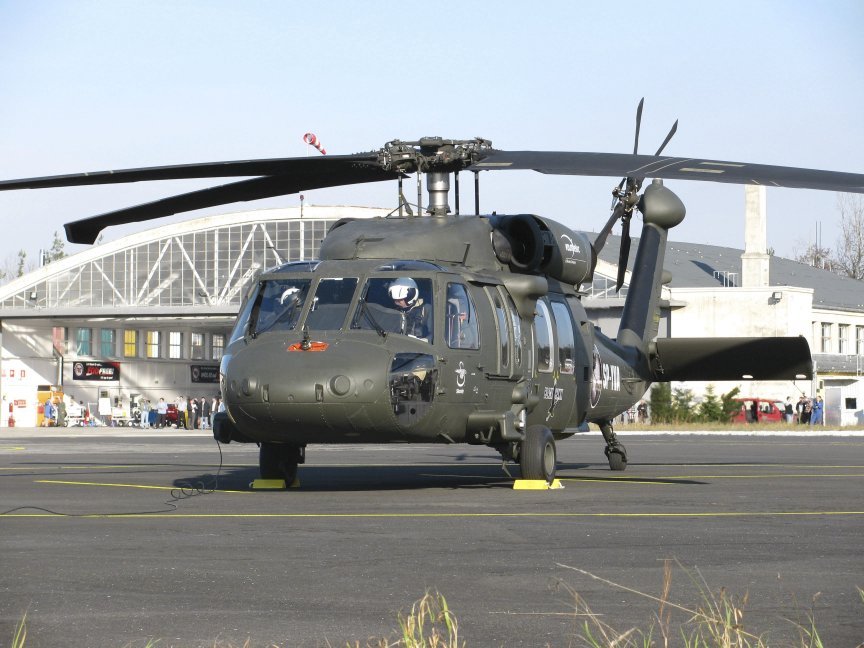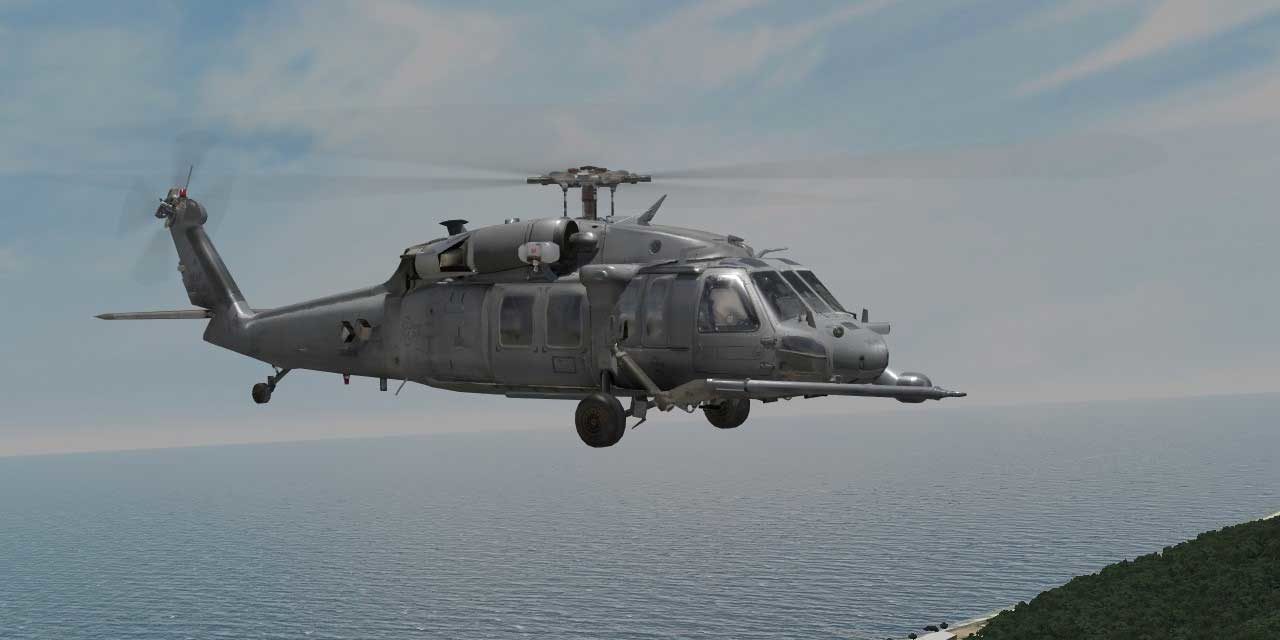Inside the Sikorsky S 70: What Establishes This Helicopter Apart from Its Rivals
Wiki Article
High-Performance Multi-Role Rotorcraft Featuring Advanced Cockpit Technologies and Integrated Sensing Unit Systems
The realm of rotorcraft innovation has actually seen remarkable developments in current times, especially in the world of high-performance multi-role rotorcraft geared up with sophisticated cabin innovations and flawlessly incorporated sensor systems. In the following discussion, we will certainly explore the evolution of rotorcraft innovation, dig right into the world of innovative cockpit technologies, and check out the implications of integrated sensing unit systems on the functional adaptability and efficiency of contemporary rotorcraft.Advancement of Rotorcraft Modern Technology
The evolution of rotorcraft technology has been noted by substantial advancements in aerodynamics, materials, and propulsion systems, shaping the capabilities and efficiency of modern-day rotorcraft. Wind resistant enhancements have actually enhanced the effectiveness and maneuverability of rotorcraft, permitting boosted rate, agility, and security during flight (sikorsky s 70). Technologies in materials, such as the use of composite products and advanced alloys, have led to lighter yet more powerful rotorcraft structures, improving overall efficiency and sturdiness. Additionally, advancements in propulsion systems, including much more effective engines and innovative propulsion innovations, have enabled rotorcraft to attain higher altitudes, faster rates, and greater payloads.These developments have not only changed the capacities of rotorcraft however have additionally expanded their applications across numerous industries, consisting of army, commercial, and emergency situation services. The constant development of rotorcraft innovation proceeds to drive technology in the field, pressing the limits of what is possible and forming the future of upright trip.
Advanced Cabin Innovations
Structure upon the fundamental improvements in the rules of aerodynamics, products, and propulsion systems, the realm of rotorcraft innovation currently moves emphasis in the direction of introducing Advanced Cockpit Innovations. The integration of cutting-edge modern technologies within the cockpit environment plays a crucial role in improving the operational abilities, safety, and efficiency of modern-day rotorcraft. sikorsky s 70. Advanced Cockpit Innovations incorporate a vast selection of functions designed to offer pilots with enhanced situational understanding, streamlined information administration, and intuitive control interfacesAmong the essential improvements in cabin design is the application of glass cabins, which change traditional analog gauges with high-resolution display screens. These electronic systems supply customizable designs, real-time data assimilation, and improved readability, making it possible for pilots to accessibility important info at a look. In addition, progressed avionics systems, such as fly-by-wire controls and augmented truth display screens, are transforming just how pilots connect with the airplane, enabling accurate control and enhanced decision-making capacities.


Incorporating sophisticated cockpit innovations not only boosts pilot performance however additionally adds to overall mission effectiveness and safety in complicated functional atmospheres. By leveraging modern modern technologies within the cabin, rotorcraft suppliers are establishing new criteria for functional excellence and objective success.
Integrated Sensor Equipments
With the development of rotorcraft modern technology, the integration of innovative Integrated Sensing unit Equipment has come to be vital in improving functional effectiveness and safety. These Integrated Sensing unit Solutions encompass a wide range of technologies that offer vital data for different features such as navigation, security, targeting, and ecological monitoring. By perfectly integrating sensing units like radars, cams, lidar, and infrared systems into rotorcraft, operators can gain from improved situational recognition, enhanced mission abilities, and minimized pilot work.One secret advantage of Integrated Sensor Solutions is their ability to collect real-time data and provide actionable insights to pilots and mission drivers. Progressed radar systems can find and track targets over long ranges, permitting for very early risk discovery and effective response preparation. Additionally, integrating infrared and electro-optical electronic cameras makes it possible for rotorcraft to carry out reconnaissance and surveillance goals with precision and accuracy.
Basically, the assimilation of cutting-edge sensing unit technologies into rotorcraft not only boosts operational performance yet also contributes considerably to overall goal success and team safety. As rotorcraft proceed to advance, the role of Integrated Sensing unit Equipment will definitely continue to be at the forefront of advancement in the aerospace industry.
Operational Versatility and Efficiency
Enhancing functional convenience and efficiency in rotorcraft is an all-natural progression from the assimilation of innovative Integrated Sensor Equipments. By leveraging the information and insights given by these innovative sensing unit systems, rotorcraft can enhance their efficiency across numerous goals and environments.Functional convenience includes the ability of rotorcraft to adapt to different duties and situations effectively. With innovative cabin technologies and integrated sensor systems, rotorcraft can flawlessly shift between jobs such as search and rescue, medical discharge, monitoring, and more. This convenience improves the rotorcraft's capability to fulfill diverse functional needs without needing extensive reconfiguration.
Performance in rotorcraft operations is crucial for making best use of objective effectiveness and source application. Integrated sensor systems play a crucial role in boosting operational effectiveness by giving real-time data on weather condition problems, terrain mapping, target monitoring, and extra. This data allows pilots to make enlightened decisions quickly, maximize flight paths, save gas, and enhance general goal productivity.
Impact on Modern Air Travel Workflow

Moreover, the assimilation of innovative sensors assists in enhanced mission preparation and implementation, enabling rotorcraft to perform a large range of tasks with improved precision. From search and rescue operations to aerial firefighting and law enforcement goals, the capabilities of modern rotorcraft equipped with sophisticated cockpit technologies and incorporated sensor important site systems are unparalleled.
Additionally, the impact of these improvements extends beyond functional efficiency to cost-effectiveness and sustainability. By enhancing trip routes, fuel usage, and upkeep schedules, high-performance rotorcraft furnished with innovative cockpit innovations and sensing units add to decreasing functional prices and ecological impact, making them crucial assets in contemporary aeronautics operations.
Final Thought
In verdict, the high-performance multi-role rotorcraft with advanced cockpit modern technologies and integrated sensor systems stands for a substantial evolution in air travel innovation. These advancements boost functional versatility and effectiveness, inevitably influencing modern-day aeronautics procedures in a favorable way. The combination of these innovative modern technologies permits improved abilities and efficiency in different objective situations, showcasing the continued development of rotorcraft innovation in this content the air travel industry.The realm of rotorcraft modern technology has actually seen remarkable improvements in current times, especially in the realm of high-performance multi-role rotorcraft equipped with cutting-edge cabin modern technologies and effortlessly integrated sensor systems. From enhanced mission convenience to boosted operational efficiency, the merging of sophisticated cockpit technologies and incorporated sensor systems has ushered in a brand-new age of opportunities for rotorcraft applications. In the following conversation, we will certainly check out the evolution of rotorcraft modern technology, dig into the world of sophisticated cockpit technologies, and analyze the implications of incorporated sensor systems on the functional flexibility and efficiency of modern-day rotorcraft.

Report this wiki page